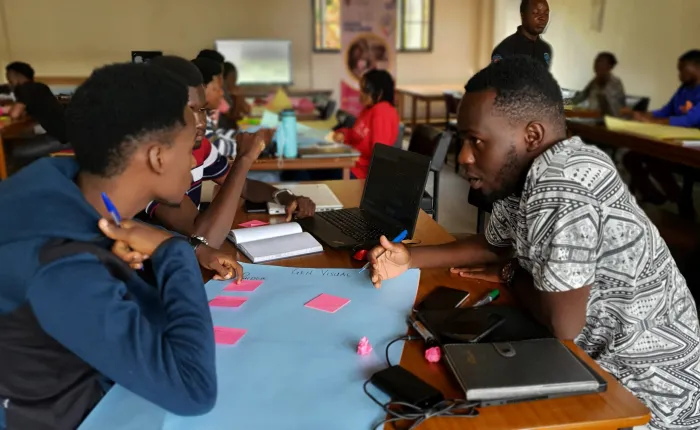By Emmanuel Isabirye
10 student teams have undergone Phase one of the Uganda Christian University (UCU) Digital Innovation Praxis Challenge. The phase dubbed ‘Understanding the User’ Ideation Bootcamp took place at the Hamu Mukasa Library, UCU, on Saturday, June 18.
The student teams were trained by digital innovation experts from the UCU Department of Computing and Technology in what is technically called the “structured and human-centered approach”, which involves quick and iterative building and refining of a product/service that would suit the needs of an end consumer.

During the training, Emmanuel Isabirye, the Co-Team Lead of the UCU Digital Praxis emphasized that “Designing innovations without understanding the user can be socially harmful, time-consuming and cost-inefficient,” he said.
Jacqueline Ainabyoona a third-year student pursuing a Bachelor of Science in Information Technology (BSIT), who is doing a project in Digital Agriculture says she learned the value of empathy; putting herself in the shoes of the user in crafting her “My farm” solution, which embraces crowd-farming to enable those who cannot afford to set up farms to rear cattle on a shared basis.
Hereafter, the teams will then be guided to do research, analysis & further rethink their innovations. At the end of the first phase, every student team shall have a well-researched problem, a theoretical solution that meets the user’s needs, and a visual sketch of the solution.

Phase two will consist of prototyping and testing, where the teams shall develop a working prototype that innovatively solves the identified problem. The prototype shall be the proof-of-concept from the teams. Hereafter, the teams will advance to stage 3.
In phase three, a widely-publicized event shall be organized for the student teams to pitch their innovative solutions to the identified problems. The three best teams shall be selected and awarded cash gifts to further improve their projects.
The final (fourth) phase will consist of marketing the student’s innovations to attract potential funders for possible scaling up of the innovations.



